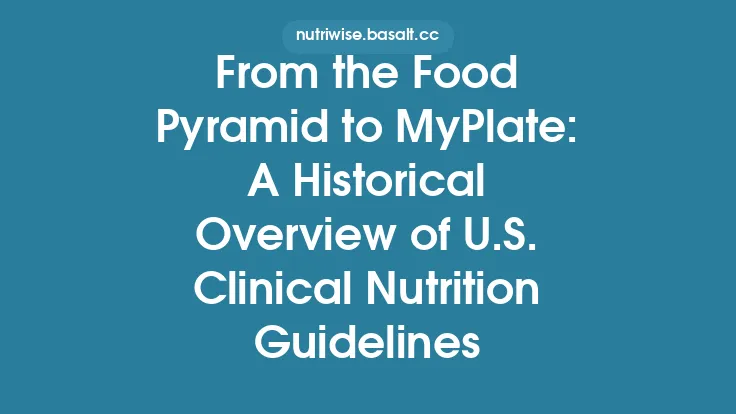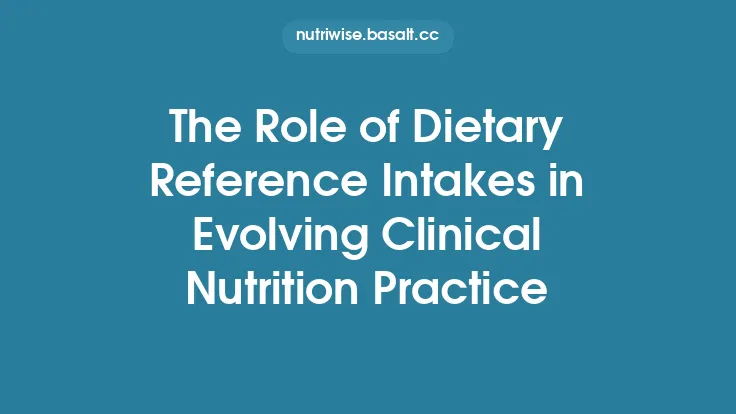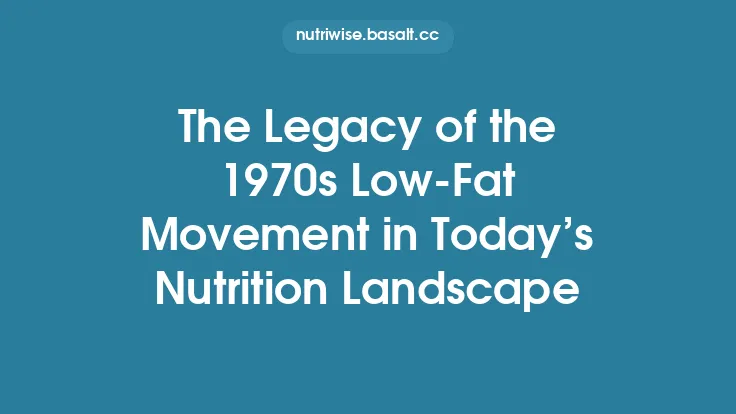Since the 1970s, the field of clinical nutrition has been shaped by a series of landmark international recommendations that have progressively refined how health professionals assess, prescribe, and monitor nutrition therapy. These milestones reflect advances in scientific understanding, methodological rigor, and global collaboration, and they continue to serve as reference points for clinicians, researchers, and policy makers worldwide.
The 1970s: Foundations of Global Nutrition Policy
World Health Organization (WHO) – 1974 “Recommendations on Nutrition for the Prevention and Management of Disease”
The WHO’s first comprehensive set of nutrition recommendations for clinical practice emerged in response to growing awareness of malnutrition’s impact on morbidity and mortality. Key elements included:
- Energy and protein requirements for various disease states (e.g., burns, trauma, postoperative recovery).
- Micronutrient guidelines emphasizing vitamin A, iron, and iodine supplementation in at‑risk populations.
- Standardized terminology for “malnutrition,” “undernutrition,” and “over‑nutrition,” which facilitated cross‑national research and data comparison.
International Society for Clinical Nutrition and Metabolism (ISCNM) – 1978 Consensus Statement
The ISCNM convened an expert panel that produced the first consensus on the use of enteral nutrition (EN) versus parenteral nutrition (PN). The statement highlighted:
- Indications for early EN in critically ill patients.
- Safety parameters for PN, including glucose monitoring and electrolyte balance.
- The importance of nitrogen balance studies to assess protein adequacy.
These early documents laid the groundwork for systematic nutrition assessment and intervention, moving the field beyond ad‑hoc dietary advice.
The 1980s: Standardization and the Rise of Evidence‑Based Nutrition
FAO/WHO/UNU Expert Consultation – 1985 “Human Energy Requirements”
A landmark collaboration produced the FAO/WHO/UNU (Food and Agriculture Organization/World Health Organization/United Nations University) equations for estimating basal metabolic rate (BMR) and total energy expenditure (TEE). The equations incorporated:
- Age, sex, weight, and height variables.
- Activity factor adjustments for clinical populations (e.g., bedridden, postoperative).
- A shift toward indirect calorimetry as the gold standard for validating predictive equations.
European Society for Clinical Nutrition and Metabolism (ESPEN) – 1989 Guidelines on Nutritional Support in Surgery
ESPEN’s first surgical nutrition guidelines introduced:
- Preoperative carbohydrate loading to reduce insulin resistance.
- Timing of postoperative EN (within 24 h) to preserve gut integrity.
- Use of nutrient density calculations (kcal/g) to tailor feeds for patients with fluid restrictions.
These contributions emphasized quantifiable metrics and reinforced the need for protocolized nutrition care pathways.
The 1990s: Integration of Micronutrients and Disease‑Specific Recommendations
WHO/UNICEF – 1991 “Guidelines for the Treatment of Severe Acute Malnutrition”
Although primarily aimed at community settings, the guidelines introduced therapeutic milk formulas (e.g., F‑75, F‑100) that later informed hospital‑based refeeding protocols. Highlights included:
- Phase‑based feeding (stabilization → rehabilitation).
- Monitoring of serum electrolytes (potassium, phosphate) to prevent refeeding syndrome.
- Integration of micronutrient fortification (zinc, vitamin A) into therapeutic feeds.
American Society for Parenteral and Enteral Nutrition (ASPEN) – 1995 “Guidelines for the Use of Parenteral Nutrition in Adult Patients”
ASPEN’s first formal PN guidelines set standards for:
- Catheter selection and placement to minimize infection risk.
- Glucose infusion rates (max 4–5 mg/kg/min) to avoid hyperglycemia.
- Amino acid composition tailored to renal and hepatic function.
International Consensus on Nutrition in Critical Illness – 1998
A multidisciplinary panel produced the first set of recommendations specifically for intensive care units (ICUs), introducing concepts that remain central today:
- Early EN (within 48 h) as the preferred route when feasible.
- Use of glutamine supplementation for patients with severe trauma or burns.
- Targeting protein provision of 1.2–1.5 g/kg/day for catabolic states.
These disease‑focused guidelines underscored the necessity of customizing nutrition therapy to the pathophysiology of each condition.
The 2000s: Global Harmonization and the Advent of Nutrient Reference Values
FAO/WHO/UNU – 2001 “Human Energy Requirements” Update
The revised equations incorporated data from indirect calorimetry studies across diverse ethnic groups, improving accuracy for:
- Obese patients (adjusted for lean body mass).
- Elderly populations (accounting for reduced metabolic rate).
- Pregnant and lactating women (additional energy demands).
ESPEN – 2003 “Guidelines on Enteral Nutrition: Adult Hospitalized Patients”
Key updates included:
- Standardized EN formulas (polymeric, oligomeric, disease‑specific).
- Feeding protocols with stepwise advancement (e.g., 10 kcal/kg/h increments).
- Emphasis on monitoring gastric residual volumes and aspiration risk.
International Society for Clinical Nutrition and Metabolism (ISCNM) – 2006 Consensus on Nutritional Screening
The group endorsed the Malnutrition Universal Screening Tool (MUST) and the Subjective Global Assessment (SGA) as validated instruments for early detection of malnutrition in hospital settings, promoting:
- Routine screening upon admission.
- Integration of screening results into electronic health records (EHRs).
- Use of risk stratification to prioritize nutrition interventions.
These milestones marked a shift toward systematic, data‑driven nutrition care across health systems.
The 2010s: Precision Nutrition and Expanded Global Collaboration
World Health Assembly (WHA) Resolution 66.9 – 2013 “Nutrition for Health and Development”
The resolution called for harmonized nutrition policies across member states, emphasizing:
- Standardized definitions of malnutrition (including sarcopenia and frailty).
- Implementation of nutrition surveillance systems to track outcomes.
- Capacity building for nutrition professionals in low‑ and middle‑income countries (LMICs).
ESPEN – 2015 “Guidelines on Clinical Nutrition in Surgery” (Second Edition)
Advancements included:
- Immunonutrition (arginine, omega‑3 fatty acids) for high‑risk surgical patients.
- Enhanced Recovery After Surgery (ERAS) protocols integrating nutrition as a core component.
- Goal‑directed protein dosing based on lean body mass measured by bioelectrical impedance analysis (BIA).
ASPEN & SCCM – 2016 “Guidelines for the Provision and Assessment of Nutrition Support Therapy in the Adult Critically Ill Patient”
Highlights of this joint guideline:
- Individualized protein targets (1.3–2.0 g/kg/day) guided by nitrogen balance and muscle ultrasound.
- Glycemic control with target glucose 110–150 mg/dL to reduce infection risk.
- Use of indirect calorimetry whenever feasible to tailor energy provision.
FAO/WHO – 2019 “Guidelines on Micronutrient Fortification of Food and Beverages”
While primarily public‑health oriented, the guidelines influenced clinical practice by:
- Defining safe upper intake levels for vitamins and minerals in therapeutic feeds.
- Providing bioavailability data for different fortificant forms (e.g., ferrous sulfate vs. ferric pyrophosphate).
- Encouraging monitoring of serum micronutrient status during prolonged nutrition support.
These documents reflect a growing emphasis on precision nutrition, leveraging body composition analysis, metabolic monitoring, and individualized dosing.
The 2020s: Digital Integration, Global Equity, and Emerging Evidence
International Consensus on Nutrition in Critical Illness – 2020 Update
Key innovations:
- Artificial intelligence (AI)–driven decision support for selecting EN vs. PN based on real‑time patient data.
- Muscle ultrasound protocols standardized for bedside assessment of lean mass loss.
- Nutrient timing recommendations (e.g., circadian alignment of feeding) to optimize metabolic outcomes.
WHO – 2021 “Guidelines on Clinical Management of Severe Acute Malnutrition in Adults”
Expanding beyond pediatric focus, the guidelines address:
- Energy provision of 30–40 kcal/kg/day with gradual escalation to avoid refeeding syndrome.
- High‑protein therapeutic feeds (≥2 g protein/kg/day) for adult patients with comorbidities.
- Integration of oral therapeutic foods (OTFs) for community‑based management, bridging hospital and outpatient care.
ESPEN – 2022 “Guidelines on Clinical Nutrition in Oncology”
Recognizing the unique metabolic demands of cancer patients, the guidelines introduce:
- Nutritional risk screening using the Malnutrition Screening Tool (MST) at diagnosis.
- Targeted protein intake of 1.5 g/kg/day for patients undergoing chemotherapy or radiotherapy.
- Use of omega‑3 enriched formulas to modulate inflammation and preserve lean mass.
FAO/WHO – 2023 “Guidelines for Nutrition in the Context of Pandemics and Emerging Infectious Diseases”
In response to global health crises, the guidelines provide:
- Rapid assessment protocols for nutrition status in outbreak settings.
- Recommendations for fortified oral rehydration solutions to address micronutrient losses.
- Guidance on remote nutrition counseling using telehealth platforms.
ASPEN – 2024 “Guidelines for Nutrition Support in Patients with Long COVID”
Addressing a novel clinical entity, the guidelines focus on:
- Screening for post‑viral fatigue and dysautonomia that affect oral intake.
- Tailored EN formulas with higher carbohydrate-to‑fat ratios to support energy needs without exacerbating dysautonomia.
- Monitoring of inflammatory markers (CRP, IL‑6) to guide anti‑inflammatory nutrition strategies.
These recent milestones illustrate how clinical nutrition recommendations are increasingly interdisciplinary, technology‑enabled, and responsive to emerging health challenges.
Cross‑Cutting Themes Across Decades
- From Generic to Disease‑Specific – Early recommendations offered broad energy and protein targets; later guidelines introduced condition‑specific formulas (e.g., renal, hepatic, oncologic) and nutrient compositions.
- Standardization of Assessment Tools – The evolution from simple weight‑based calculations to sophisticated screening instruments (MUST, SGA) and body composition technologies (BIA, ultrasound) has improved risk stratification.
- Emphasis on Safety – Refeeding syndrome, catheter‑related bloodstream infections, and hyperglycemia have been recurrent safety concerns, prompting the development of monitoring protocols and preventive measures.
- Integration of Metabolic Monitoring – Indirect calorimetry, nitrogen balance studies, and, more recently, AI‑driven analytics have refined the precision of energy and protein prescriptions.
- Global Collaboration – Joint efforts among WHO, FAO, ESPEN, ASPEN, and regional societies have fostered harmonized terminology, shared evidence bases, and coordinated implementation strategies across diverse health systems.
- Technology Adoption – Electronic health records, decision‑support algorithms, and tele‑nutrition platforms have become integral to delivering consistent, evidence‑based nutrition care.
Practical Takeaways for Clinicians
- Adopt a tiered screening approach: Use a rapid tool (e.g., MUST) on admission, followed by a comprehensive assessment (SGA, BIA) for those at risk.
- Prioritize early enteral nutrition whenever the gastrointestinal tract is functional, aiming for initiation within 24–48 h of admission for critically ill patients.
- Individualize protein targets based on disease state, lean body mass, and functional goals; consider higher intakes (≥1.5 g/kg/day) for catabolic conditions such as trauma, sepsis, and cancer.
- Utilize indirect calorimetry when available to fine‑tune energy provision, especially in patients with fluctuating metabolic demands (e.g., burns, severe sepsis).
- Monitor for refeeding syndrome: Check serum electrolytes (phosphate, potassium, magnesium) before and during the first 72 h of nutrition support in severely malnourished patients.
- Incorporate micronutrient surveillance: Periodic measurement of vitamin D, zinc, and selenium can guide supplementation, particularly in long‑term PN or specialized EN regimens.
- Leverage digital tools: Implement nutrition order sets and alerts within the EHR to ensure adherence to guideline‑based targets and to flag deviations promptly.
- Stay current with updates: International guidelines are regularly revised; subscribing to professional society newsletters and participating in continuing education ensures practice remains aligned with the latest evidence.
By tracing these milestones—from the foundational WHO recommendations of the 1970s to the sophisticated, technology‑enabled guidelines of the 2020s—we see a clear trajectory toward precision, safety, and global coherence in clinical nutrition. Understanding this historical context equips clinicians and researchers with the perspective needed to apply current recommendations effectively and to contribute to the next generation of nutrition guidance.





